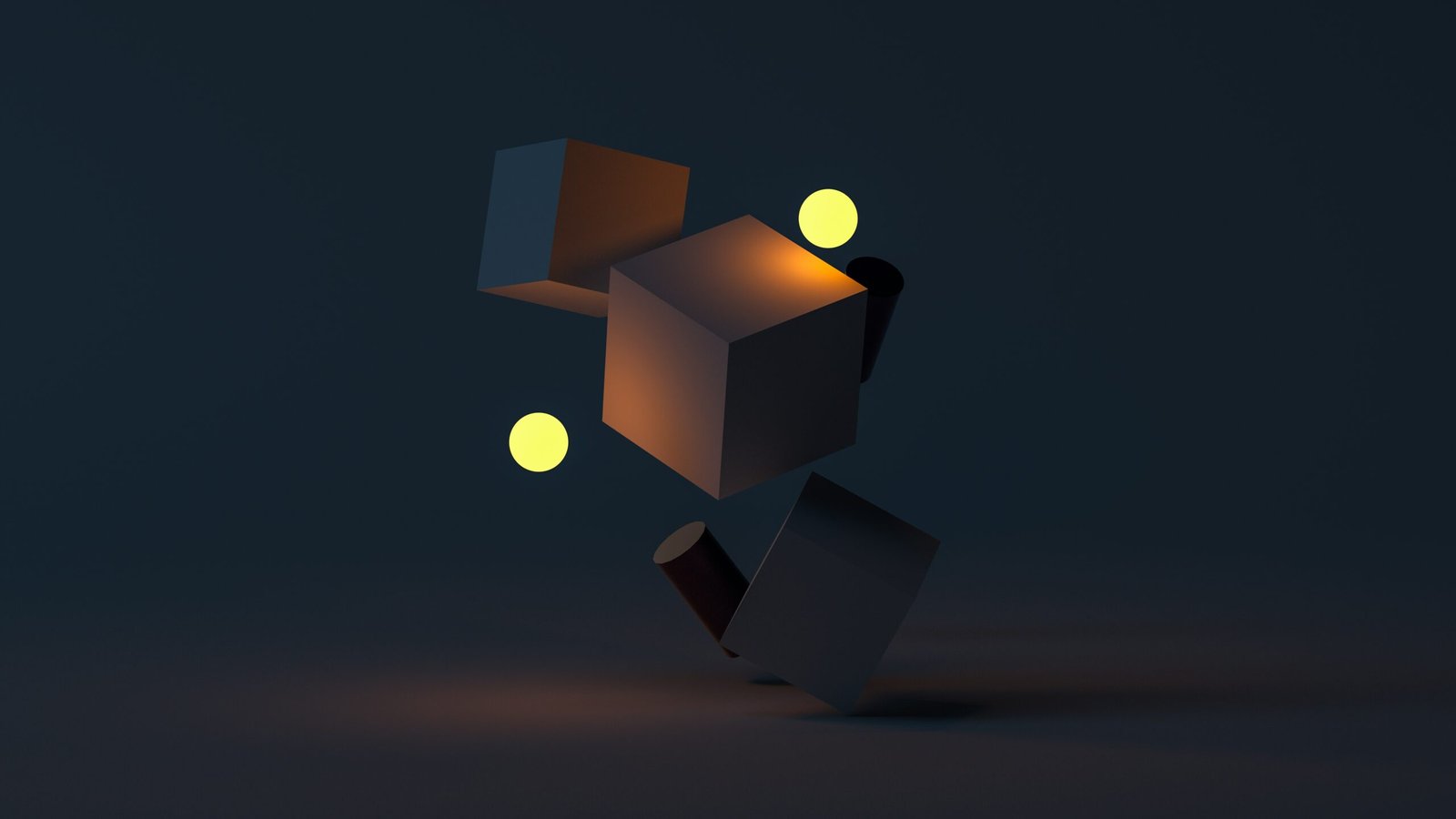
One of the key aspects of 3D animation is the creation of three-dimensional objects. These objects are built using computer-generated models, which are made up of vertices, edges, and polygons. The models are created using specialized software, such as Autodesk Maya or Blender, which allow animators to sculpt and shape the objects to their desired form.
Once the objects are created, they are then textured and shaded. Texturing involves applying images or patterns onto the surface of the objects to give them a realistic appearance. Shading, on the other hand, involves determining how light interacts with the objects’ surfaces, which helps to create depth and dimension.
After the objects are textured and shaded, they are then rigged. Rigging is the process of adding a digital skeleton to the objects, which allows animators to manipulate them and create movement. The digital skeleton consists of joints and bones, which are connected to the objects’ vertices. By moving and rotating the joints, animators can make the objects bend, twist, and deform.
Once the objects are rigged, the animation process begins. This involves creating keyframes, which are specific poses or positions that the objects will take at different points in time. Animators then use interpolation techniques to fill in the gaps between the keyframes, creating smooth and fluid motion.
Lighting is another important aspect of 3D animation. It involves placing virtual light sources within the digital environment and adjusting their intensity, color, and direction. Proper lighting can greatly enhance the overall look and feel of an animation, as it helps to create mood, highlight important elements, and add realism.
Finally, the animation is rendered. Rendering is the process of converting the digital information into a final image or sequence of images. This is a computationally intensive process that requires powerful hardware and software. The rendering process takes into account factors such as lighting, shading, and camera angles to produce a high-quality output.
In conclusion, 3D animation is a complex and intricate process that involves the creation and manipulation of three-dimensional objects. It combines artistry, technology, and storytelling to bring these objects to life in a digital environment. From the creation of models to the final rendering, every step in the process requires attention to detail and a deep understanding of the principles of animation.
The Basics of 3D Animation
At its core, 3D animation involves the use of computer software to create and manipulate three-dimensional objects. These objects are built using polygons, which are flat shapes with straight sides. By manipulating the position, rotation, and scale of these polygons, animators can create the illusion of movement and depth.
One of the key aspects of 3D animation is rigging, which involves creating a digital skeleton for the 3D model. This skeleton allows animators to control the movement of the model’s limbs, facial expressions, and other features. By manipulating the skeleton, animators can create lifelike movements that are essential for creating believable characters and objects.
Another important aspect of 3D animation is texturing, which involves applying colors, patterns, and textures to the surfaces of 3D models. This process adds realism and detail to the objects, making them look more like their real-world counterparts. Texturing can involve the use of photographs, hand-painted textures, or procedurally generated patterns.
Once the 3D models are rigged and textured, animators can begin the process of animation. This involves creating keyframes, which are specific poses or positions that define the start and end points of a movement. The computer software then calculates the in-between frames, creating a smooth and fluid animation.
In addition to rigging, texturing, and animation, lighting and rendering are also crucial components of 3D animation. Lighting is used to create the desired mood and atmosphere in a scene, and it can be simulated using various techniques such as global illumination, area lights, and ambient occlusion. Rendering, on the other hand, is the process of generating the final image or sequence of images from the 3D scene. This involves calculating the interaction of light with the objects in the scene and applying various effects such as shadows, reflections, and refractions.
Furthermore, 3D animation often involves the use of special effects to enhance the visual impact of a scene. These effects can include particle systems, which simulate the behavior of particles such as fire, smoke, or water, as well as simulations of cloth, hair, and other physical phenomena. These effects can add a level of realism and detail to the animation, making it more immersive and visually appealing.
Overall, 3D animation is a complex and multifaceted process that requires a combination of technical skills, artistic vision, and attention to detail. From building and rigging 3D models to texturing, animating, lighting, rendering, and adding special effects, every step plays a crucial role in creating a compelling and visually stunning animation.
Applications of 3D Animation
3D animation has a wide range of applications in various industries. It is commonly used in the entertainment industry for creating animated films, television shows, and video games. 3D animation allows filmmakers and game developers to bring their imaginative worlds to life and create compelling and immersive experiences for their audiences.
Architects and interior designers also use 3D animation to visualize and present their designs. By creating realistic 3D models of buildings and interiors, they can give clients a virtual tour of their projects before they are built. This helps clients better understand the design and make informed decisions.
Additionally, 3D animation is used in the fields of medicine and education. Medical professionals can use 3D animations to explain complex medical procedures or illustrate the inner workings of the human body. For example, an animation can demonstrate how a surgical procedure is performed, showing the step-by-step process in a clear and visual manner. This not only helps medical students and professionals understand the procedure better, but it also allows patients to have a visual representation of what will happen during their treatment, reducing anxiety and increasing trust.
In the field of education, 3D animation can make learning more engaging and interactive. It can be used to create dynamic visualizations of scientific concepts, such as the movement of planets in the solar system or the process of photosynthesis. By presenting these concepts in a visually appealing and interactive way, students are more likely to grasp and retain the information. Moreover, 3D animation can also be used to simulate historical events, allowing students to witness important moments in history and gain a deeper understanding of the past.
Furthermore, 3D animation finds applications in the advertising and marketing industry. Companies can use animated videos to promote their products or services in a captivating and memorable way. With 3D animation, they can showcase the features and benefits of their offerings, creating a strong brand image and attracting potential customers. Additionally, 3D animation can be used to create virtual reality experiences for marketing purposes, allowing customers to virtually explore and interact with products before making a purchase.
In conclusion, 3D animation is a versatile tool that has revolutionized various industries. Its applications range from entertainment and architecture to medicine, education, and marketing. By harnessing the power of 3D animation, professionals in these fields can enhance their work, communicate complex ideas effectively, and create engaging experiences for their audiences.
Another exciting development in the future of 3D animation is the use of motion capture technology. Motion capture involves recording the movements of real-life actors or objects and translating them into digital animations. This technology has been used in the film industry for years, but advancements in hardware and software are making it more accessible and affordable.
With motion capture, animators can create incredibly realistic and fluid animations by capturing the subtle nuances of human movement. This not only saves time but also adds a level of authenticity to the final product. Imagine being able to bring a character to life with the same grace and fluidity as a professional dancer or athlete.
Additionally, the future of 3D animation holds promise for advancements in rendering techniques. Rendering is the process of generating the final image or sequence of images from a 3D model. As technology improves, we can expect to see more realistic lighting, textures, and effects in 3D animations.
One area that is already seeing rapid growth is real-time rendering. Real-time rendering allows animators to see the final result of their work in real-time, rather than waiting for hours or even days for a render to complete. This not only speeds up the production process but also allows for more experimentation and iteration.
Furthermore, the future of 3D animation is not limited to traditional screens. With the rise of wearable technology, such as smart glasses and virtual reality headsets, we can expect to see more interactive and immersive 3D animations. Imagine being able to step into a virtual world and interact with animated characters and objects in real-time.
In conclusion, the future of 3D animation is bright and full of possibilities. Advancements in technology, such as VR, AR, AI, motion capture, and rendering techniques, are pushing the boundaries of what is possible in the world of animation. As these technologies continue to evolve, we can expect to see even more realistic, immersive, and interactive 3D animations in the years to come.



